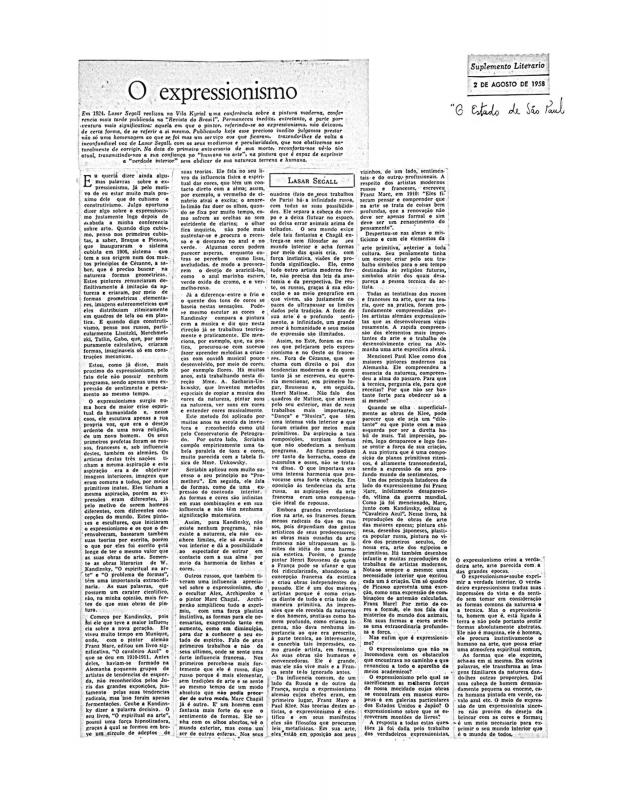In a sign of both the emergence of Expressionism and the established nature of the immigrant artist community, this issue of Revista Acadêmica—which usually focused on literary subjects—was entirely devoted to the life and work of the painter Lasar Segall (1891–1957). This Brazilian painter, printmaker, and sculptor, who was of Jewish-Lithuanian descent, combined Impressionism, Expressionism, and even Modernism in works that portrayed human suffering, the war, persecution, and the white-slave trade. For more information on this painter, see “Um pintor de almas: a propósito de Lasar Segall” [digital archive ICAA (doc. no. 1084988)]; and to learn more about Segall’s thoughts on Expressionism, see his lecture “O expressionismo” (doc. no. 783352).
The Revista Acadêmica was published in Rio de Janeiro from 1933 to 1945. Murilo Miranda was the managing editor and, throughout the magazine’s existence its board of directors included some of the leading Brazilian intellectuals of the period, such as Mário de Andrade, Aníbal Machado, Graciliano Ramos, Oswald de Andrade, Érico Veríssimo, Sérgio Milliet, Jorge Amado, Santa Rosa, and Candido Portinari.
This issue of Revista Acadêmica published a number of illustrations of, and several discussions about, one of the most famous works Segall produced in 1939–40: Navio de emigrantes, in which he continues to explore human suffering, in this case from various perspectives. The painting shows a group of immigrants crowded together on the deck of a ship, their faces reflecting the uncertainty of their situation. The work evokes the waves of migrants who crossed the ocean to escape suffering and persecution in their homelands. To learn more about Segall’s thoughts on the emigration of Jewish art, see “¿Existe uma arte judaica?”, published in A comunidade judaica no Brasil (São Paulo: Federação Israelita do Estado de São Paulo, 1984).
After this issue of Revista Acadêmica appeared, Segall produced several works that included a literary component. He worked with the writer Jorge de Lima to publish Poemas negros (Rio de Janeiro: Revista Acade´mica Editora, 1947). Segall also published a portfolio of works called Mangue (a reference to the old red light district in Rio de Janeiro) consisting of three woodcuts that illustrated essays by Jorge de Lima, Mário de Andrade, and Manuel Bandeira (Rio de Janeiro: Revista Acade´mica Editora, 1943); this project sought to cast some light on the miserable living conditions endured by marginalized people whom society has abandoned. From 1949 until his death in 1957, Segall continued to explore the Mangue theme in prints and paintings. He also produced other series entitled As erradias e Florestas. For more information concerning Segall’s later works, see “Lasar Segall II,” published in Lasar Segall: antologia de textos nacionais sobre a obra e o artista (Rio de Janeiro: Funarte, 1982).


